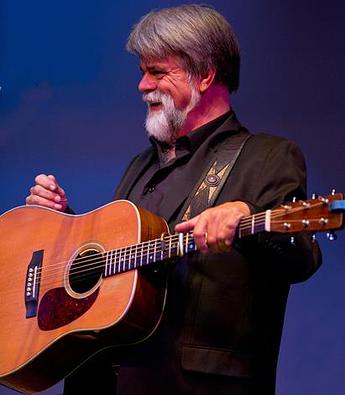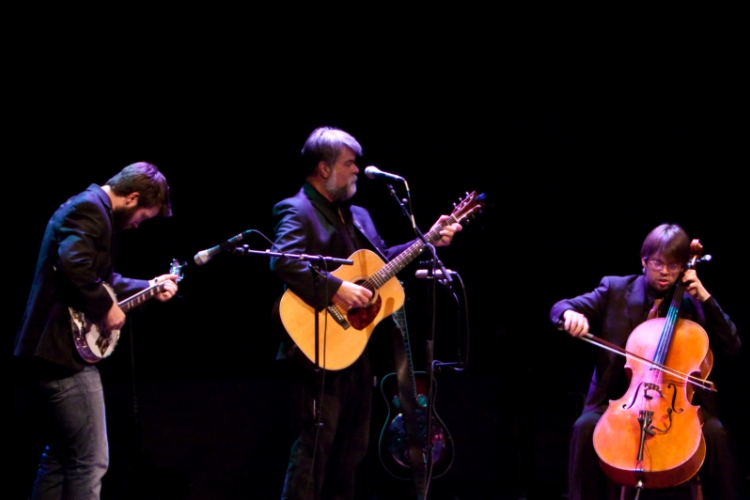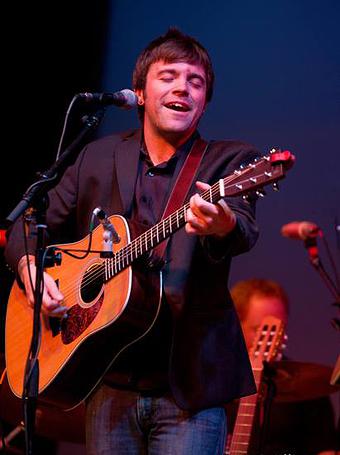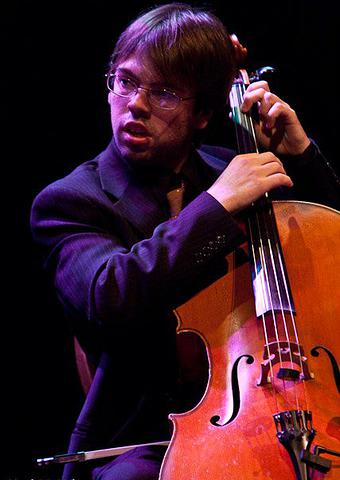“Though leaves are many,” the Irish Poet William
Butler Yeats once observed, “the root is one.”
Sit down to talk with the members of Ronstadt
Generations — Michael J. Ronstadt and his sons Michael G. and Petie —
and you’ll feel the strength of their roots in Tucson, Arizona.
In the late 1980s, Linda Ronstadt — the family’s
most celebrated member and Michael J.’s older sister — explored the
family’s Mexican roots in two hugely successful albums, Canciones de
Mi Padre (Songs of My Father) and Mas Canciones (More Songs).
Her forays into folk-rock, country, and American standards had already
made the family name world-renowned by that time.
Today, with Linda retired and unable to sing because
of Parkinson’s disease, Ronstadt Generations are keeping the family’s
musical legacy alive. Michael J., who has sung harmony with Linda on
numerous recordings, calls it “genetic memory.” He uses the desert
vegetation that grew at his grandfather’s house as a symbol for their
familial musical gift. “They all had olive trees, and oleander, and
nopal cactus — and it has carried through to all the houses our family
has owned,” he explains.
 That grandfather — Frederico José María Ronstadt —
was born in Sonora, Mexico and moved to Tucson when he was 14. He
brought with him an innate love for and knowledge of music, eventually
forming Club Filarmónico Tucsonense, one of the city’s first orchestral
ensembles. “He could read and write music, and he taught all the
musicians how to play their instruments,” explains Michael J. “He even
wrote out many of the arrangements because they had no money to buy
sheet music.”
That grandfather — Frederico José María Ronstadt —
was born in Sonora, Mexico and moved to Tucson when he was 14. He
brought with him an innate love for and knowledge of music, eventually
forming Club Filarmónico Tucsonense, one of the city’s first orchestral
ensembles. “He could read and write music, and he taught all the
musicians how to play their instruments,” explains Michael J. “He even
wrote out many of the arrangements because they had no money to buy
sheet music.”
Fred Ronstadt then passed that musical affinity onto
his children, including Gilbert Ronstadt, the father of Linda and
Michael J. “Music is one of the first sounds we hear,” Michael J. adds,
“and I think there has to be a component of nurturing from the family as
well.”
“When I think of our music,” muses Petie, who sings,
writes, and plays bass guitar, “I think of a mesquite tree root system I
saw mounted on a wall at a venue where we played recently. I call our
specific sound Tucson Roots in America — all the seeds of our music were
planted here in this city.”
That supercharged musical gene has helped to define
various members of the Ronstadt family across five generations,
providing an undeniable sense of place to everything they do. Singing as
a family has always been an integral aspect of their everyday lives. “It
gave generations some commonality, something we’ve lost in our
fragmented society,” says Michael J., who also writes and plays guitar,
mandolin, and mandocello.
Though
he plays by ear, his sons are both trained: an accomplished musician and
instructor, Michael G. holds a Master’s and Bachelor of Music in Cello
Performance, and Petie has studied both bass guitar and upright bass.
Yet, it was a post-Thanksgiving dinner jam session
in 2009 that actually gave birth to Ronstadt Generations. Their eclectic
music, including original compositions and covers, spans time and
genres, including 19th-century folk songs, protest songs,
Mexican huapangos, rock, and roots music. “We all ended up doing
this because we love the art form of music,” observes Petie. “We love
existing in that conversational space.”
 A respected studio musician who has appeared on more
than 50 albums in the last ten years, Michael G. addresses the effect of
his training. “Ultimately, it gives me the tools to understand what I’m
doing,” he comments. “Training has given me an extra palette of tones
that I listen to — from atonal 20th-century music to the
Romantic era and all the way to Beethoven and beyond.”
A respected studio musician who has appeared on more
than 50 albums in the last ten years, Michael G. addresses the effect of
his training. “Ultimately, it gives me the tools to understand what I’m
doing,” he comments. “Training has given me an extra palette of tones
that I listen to — from atonal 20th-century music to the
Romantic era and all the way to Beethoven and beyond.”
What he does with the cello, though, is another
story. In addition to his striking, emotive playing, Michael G. strums
and plucks and invokes sounds from the instrument not usually associated
with it, particularly on the folk and rock numbers.
The band’s repertoire runs the gamut from a cover of
Buffalo Springfield’s “For What It’s Worth” to “El Camino,” a haunting
Mexican ballad, to original compositions like Michael J.’s riveting
“Mill of Oracle.” Intricate harmonies merge with profound musicianship
on all these numbers. “I think there’s room for any type of music,” says
Michael G., “as long as it’s genuine and the people are performing
honestly with their instrument and voices.”
A moving cover of the 19th-century folk
song “Wayfaring Stranger” finds the band doing what it does best,
reinterpreting roots music in an authentic yet innovative way. “That’s
one of those songs that resonates,” says Michael J. “I’ve seen that song
help people time and time again — it’s a sad song that still leaves you
with a feeling of hope.”
 Petie’s “Will You Fade” offers an indictment of the
chemical pollution of our rivers. “How can we allow our rivers to catch
fire?” he asks. “Why is that a definition of freedom?” On “Prelude to a
Highlife,” with its stomping hoedown rhythms, Michael G. Drives his
cello like a country fiddle.
Petie’s “Will You Fade” offers an indictment of the
chemical pollution of our rivers. “How can we allow our rivers to catch
fire?” he asks. “Why is that a definition of freedom?” On “Prelude to a
Highlife,” with its stomping hoedown rhythms, Michael G. Drives his
cello like a country fiddle.
“With any group you weigh all your options and try
them out,” Michael G. explains about song choice. “Typically, there’s a
collective agreement on what works. It’s usually a group decision after
trying a few options. We might record it and play it back and we’ll hear
it. In the end, I think everyone tends to agree.”
Still, the band revels in the live playing. “There’s
an emotional spark that happens when you’re part of something that can’t
be recreated in a recording,” admits Petie. Michael J. adds that people
“often come up afterwards saying they have been moved by something we
played.”
When the band expands beyond its three core family
members, it adds musicians known as Los Tusconenses (the name a
reference to Fred Ronstadt’s ensemble). For example, member Alex Flores,
a tenor saxophone player, is also the youngest inductee into the Arizona
Blues Hall of Fame. He too has felt the pull of Tucson. “I went
everywhere, traveling with all kinds of bands,” he recalls. “We’re also
fifth generation — our Yaqui ancestors came up in the 1850s to escape
persecution in Sonora.”
The band’s recordings, available on iTunes, Amazon,
and
www.ronstadtgenerations.com, include the recently released
Epilogue (2014), Prelude (2012), Lulo (2010) — and a
collection of Americana (America, Our Home, 2012) and Christmas
tunes (Memories of Christmas, 2012). Myriad live recordings are
also available.
 Ronstadt Generations frequently holds workshops —
the most famous of which is their Canciones de Mi Padre workshop,
developed for the Common Grounds on the Hill Arts Festival in
Westminster, Maryland. Since then it has been held all over the country
and abroad.
Ronstadt Generations frequently holds workshops —
the most famous of which is their Canciones de Mi Padre workshop,
developed for the Common Grounds on the Hill Arts Festival in
Westminster, Maryland. Since then it has been held all over the country
and abroad.
“The workshop is a living, breathing experience that
evolves every time you walk into a new situation,” indicates Petie. “We
started compiling a book that goes though the history of the family,
some song sheets, technical information — as a guideline for what the
workshop can encompass.” The workshop has consisted of three and
five-day events, often featuring a concert.
The band also plays at rest homes, especially for
Alzheimer’s patients. “As the music is happening, we can see the
patients become more aware,” says Michael J. “We played a bunch of these
places last summer and then went back last December — and many of the
people remembered us.”
At one point, Michael J. alludes to his aunt, Luisa
Espinel, a singer, dancer, and actress who even appeared in a film with
Marlene Dietrich. Her 1946 book of Spanish folk songs — Canciones de
Mi Padre — inspired and lent its name to Linda Ronstadt’s
Grammy-winning mariachi albums. Espinel referred to the “wistfulness” of
the songs’ melodies.
Perhaps this explains the allure of Ronstadt
Generations’ sound. It isn’t simply the accomplished musicianship and
arresting harmonies. It’s the reminder that popular music once embraced
many genres of music, a wistful sense that what you are listening to is
a sound and informed approach fading from the American music scene.
Yes, there’s a lot of the Tucson desert in the music
of Ronstadt Generations — and if you listen closely, you’ll hear the
sound of five generations of Ronstadts whispering their very heart and
soul in every line.
Mark Mussari, Ph.D.,
is a freelance writer, translator, and scholar living in Tucson,
Arizona.